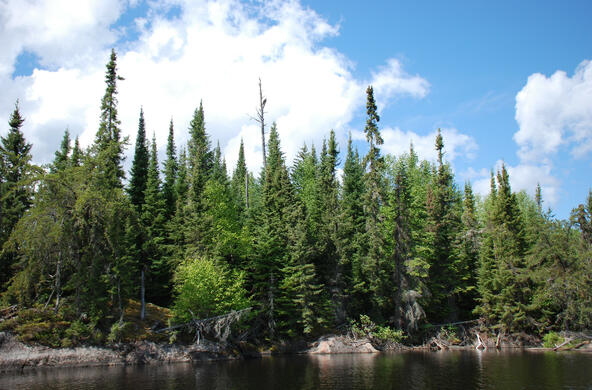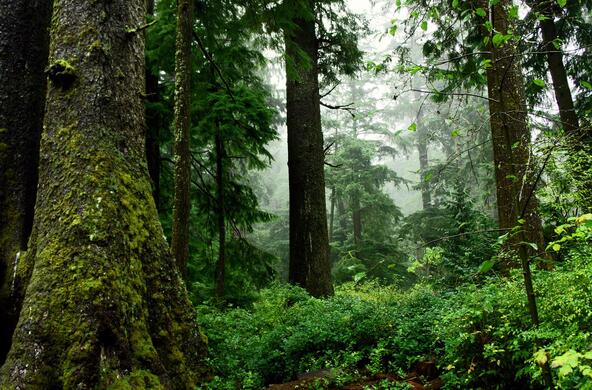If you are like most people, you have probably never heard of carbonyl sulfide, even though it is the most abundant sulfur gas in Earth’s atmosphere. Carbonyl sulfide is a linear molecule, with a carbon atom in the middle and a sulfur atom attached at one end and an oxygen atom attached at the other. The chemical formula is thus OCS.
Found at an average concentration of 0.5 parts per billion in the atmosphere, OCS would not seem to be of immediate concern. Human health effects begin at 1000 parts per million.
Carbonyl sulfide comes from a variety of sources, of which industry appears to be the largest. It is cleansed from the atmosphere by a variety of processes, including uptake by vegetation and soils. There are several properties of OCS that make it interesting to global change scientists.
Let’s focus on the uptake of OCS by plants, which occurs through the same pores—stomates—on the leaves of plants that let in carbon dioxide for photosynthesis. OCS that enters plants is destroyed in plant cells. Thus, despite rising industrial emissions, it is of interest that the concentration of OCS in the atmosphere has been declining in recent decades: could this be an indication of greater plant photosynthesis on land?
One set of atmospheric scientists suggests that falling OCS indicates that photosynthesis may have increased by 30% during the past decade–certainly a welcome possibility by farmers and foresters alike.
Second, except for large, explosive volcanic eruptions, OCS is the dominant source of sulfate aerosols in the stratosphere, in a layer at about 20 to 25 km altitude. Sulfate aerosols in the stratosphere reflect incoming solar radiation and cool the planet. (Indeed, various people have suggested that we should be increasing stratospheric aerosols to combat global warming). T
The declining concentrations of OCS in the atmosphere come at a time when higher concentrations of stratospheric aerosols might be useful as a way of dealing with climate change.
The budget for OCS in the atmosphere is rather poorly understood, and we can hope for further refinements in the coming years. If plants are sucking up OCS, this would decrease the reflection of sunlight by the Earth, inducing warming. If photosynthesis has increased, that removes carbon dioxide from the atmosphere, potentially mitigating climate change. Stay tuned.
References
Campbell, J.E., et al. 2014. Atmospheric carbonyl sulfide sources from anthropogenic activity: implications for carbon cycle constraints. Geophysical Research Letters 42: 3004-3010.
Campbell, J.E., et al. 2017. Large historical growth in global terrestrial gross primary production. Nature 544: 84-88.
Schlesinger, W.H. and E.S. Bernhardt. 2013. Biogeochemistry: An analysis of global change. Academic/Elsevier, San Diego.
Spielmann, F.M., et al. 2019. Gross primary productivity of four European ecosystems constrained by joint CO2 and COS flux measurements. Geophysical Research Letters doi: 10.1029/2019GL082006







